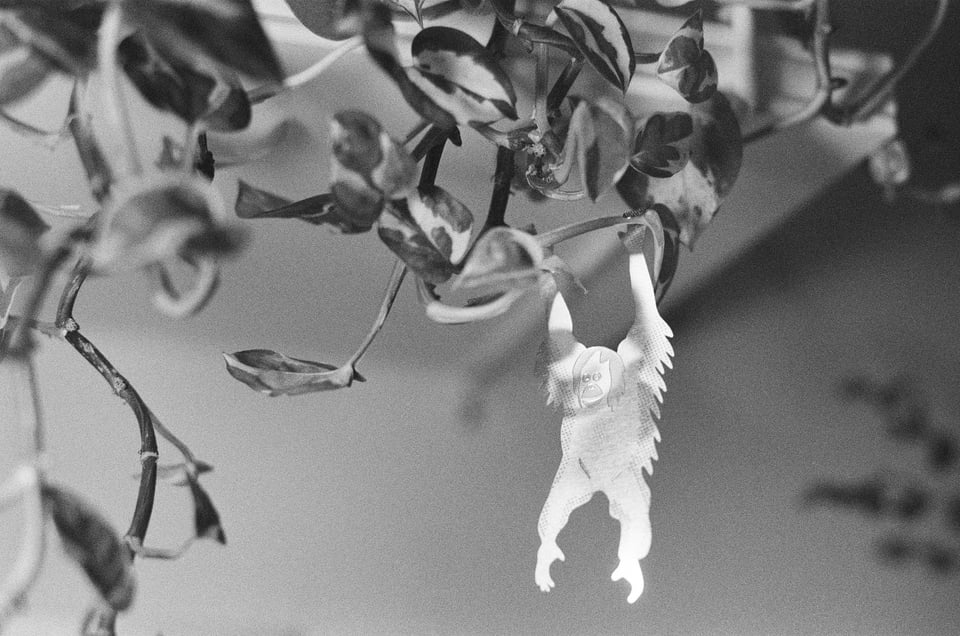It really Grinds My Gears™ whenever I encounter the common claim that Hamlet’s speech to the Players expresses Shakespeare’s own theatrical sensibility. It’s not bad acting advice, if a little bit stale, but attributing those views to the man himself feels to me like bad reading.
Hamlet is not trying to put on a good show, he’s trying to fuck with Claudius. That’s the literal purpose of his instructions. On a higher order (death to literalism!), why are we affording pure authorial voice, so rare in Shakespeare’s work and so at odds with the rest of the play, to this particular passage? That’s my real issue, and I’ve never actually heard the view argued, only sagely asserted; a mode to which I am, alas, allergic. Like, if Shakespeare is speaking through Hamlet here, what do we then do with the notion that “the purpose of playing […] is, to hold, as 'twere, the mirror up to nature,” when our boy has been very prominently conversing with a downright spooktacular ghostie?
Thank you in advance for agreeing that I’m right, and for challenging this claim whenever it appears. Acting teachers the world over quake in fear at our power!

Teaching updates: interested in a class?
I’m co-developing a course on connecting physical acting techniques to the immediate concerns of scene work. It’s in early planning, but picture something along the lines of “Experimental Embodiment: New Approaches to Scene Study.” I want to gauge interest, so if you’d be curious about joining something like this, co-taught with a very cool artist with big physical chops, give me a ping.
Also since we last spoke I did some coaching and enjoyed it very much and would love to do more. Is your book feeling stale? Do you have a big audition coming up and want an outside look? Are you preparing for MFAs? Well it’s the wrong season for that, but I am here 4 u regardless. For those who don’t know, I have a strong background in education, and it’s very connected to my acting work—like, over the summer during my conservatory training, I was teaching Intro to Acting at my old undergrad. Hit me up!
Art Workers episode! With Mari Blake!
Hey boss, I think you dropped this.
Thanks, Mari, for the chat! The traditional barrel-aging techniques of Carl Bindman podcasts ensure a complex palate with a smooth finish; they just wouldn’t be the same if I put them out on time.
Furiosa and the long and winding road home (Part 1 of [?])
Here’s an idea. Every work of art has a way that it wants to be understood (or used to create understanding), and on some level a successful work must communicate this desire to its audience.
This feels intuitively true in some obvious ways, right? At its most simple, it’s the dynamic that in order to see a painting, you ought to be able to… see… the painting. More broadly, this idea builds on the notion that artists employ specific techniques in the construction of their work, and that any and all of those choices encode meaning. The tools to decode those choices back into meaning by the audience inhere to the techniques employed; they leave marks on the finished work that the audience knows how or must learn how to read, at least a little. Like how a sentence wants to be read in a certain order for best sense, so too do the constitutive marks of an artwork. If there are no such marks or if the marks are obscured or ignored somehow (by time, or malice, or “generative” algorithms), it’s no longer an exchange and we’re no longer having an artistic experience.
On this view, which is my view, exchange is the primary action of art which spurs all the others, and the most important place of artistic action is where the encoding of meaning by the artist and the decoding of meaning by the audience meet and work on each other. Consciously or unconsciously, the invitation is made, the invitation is accepted, and now it’s art time. Cool? Cool.
The main thing here is that this is a strong starting place for critical reading in good faith. It’s never a wrong move to ask: what does this piece of art want me to do with it?

With that in mind, let’s talk about ol’ George Miller’s lesser masterpiece, Furiosa: A Mad Max Saga (2024). I love this movie, and I also want to flag how it puts conspicuous effort into teaching its audience how to watch it.
At the onset, Furiosa makes two very clear gestures in this direction. We get its name, and its first line of character dialog. The name lays out the situation, which is that this is a saga about Furiosa, the character. Duh. So, we’re dealing with a work in the mode of oral history and heroic myth, promising journeys, repetitions, digressions, episodic encounters; exploring and complicating a theme and a larger-than-life hero whom we already know. Boom, expectations set. Next, in the same way that the foundational heroic sagas do (tell me again how angry Achilles was), the movie’s first line serves as a statement of purpose, a unifying question that will guide us down its many winding paths. It’s kind of brutally on the nose here, actually, with the narrative framing delivered by the personified narrator looking directly to camera before dissolving to become the nighttime desert, the empty stage on which our story is about to play out. From the History Man himself: “As the world falls around us, how must we brave its cruelties?”
The very next shot (after the act title) is a precipitous zoom from space all the way down to the desert into an impossibly lush hidden garden at the mouth of a mountain range shaped like a snake, where a girl picks a ripe fruit from a tree. This first shot of the first scene proposes a biblical rhyme on a cosmic scale, establishes the extreme contrasts of the setting, introduces our lead character’s temperament, and also finds a moment during the descent to show the sandstorm that will arrive in around 15 minutes, thereby seeding the grounded physical rules of this world. Incredible. Incredible!
Why is it doing this? Why is the movie insisting on itself so aggressively, right away? In part, because this is a prequel to Fury Road, a movie of such visceral power that just thinking about it makes me sweat. Miller knows audiences are coming to this movie with that movie seared into their minds, so he wants to reset expectations at the onset, on as many levels as he can. That this intro is so artistically unified with the rest of the work is, like, super cool, he’s a great director, but I can’t help but feel like the overall shape is just as much a tactical choice to carve out space so folks can watch the movie for what it is, rather than what it isn’t, which is to say, Fury Road 2: Even More Furious. This tension of identity never really goes away, as the film reflexively folds over and under characters and images and locations from Fury Road like a country path running along a highway, but it’s never so effortful in its claim to being something else as right at the beginning.
Kind of like Furiosa. Aha! Picking at the threads, asking why they are the way they are, has already led us to the heart of the thing, even in two shots and before the protagonist has said a word. What does this art want me to do with it? It wants me to see that Furiosa is something else, different in important ways from, and that reflect on, what came before. That’s why her story matters, that’s why we’re all here, and that’s what the movie is going to investigate. Because this is so clear right at the top (and because its end point is as fixed as Charlize Theron’s posture), it has license to go fucking nuts in how it moves from point A to point B, which, spoiler alert, it does.
The stupid thing about this sort of analysis is that it’s all kind of obvious, right? Like, all this stuff I’ve laid out is felt automatically by just watching the movie. But I think there’s beauty in the intricacy of how that feeling is built; and selfishly, as an artist, it’s important for me to know what tools are out there, to know how to read them and use them for myself. I’m basically Anya Taylor-Joy, is what I’m saying—think about it, nobody has ever seen us in a room together!
I’m going to pause here so this doesn’t run a million words long. I’ll pick this up, maybe not next time, but sometime. I haven’t even gotten to talk about Piss Boy yet, or, like, the actual substance of the film. What a tease!
Happy almost 10-year Fury Road anniversary, to those who celebrate. And happy hooray it wasn’t Pierre to my Canadians. And happy MAY DAY, BABY!!!!
Carl
Link time, to the tune of “El Condor Pasa (If I Could)”: I’d rather be a hater than a mark.
This might be too many links. Or… too few?
Happy May 1st. The value of your labor belongs to you and the actions of the state are best understood as as a coordinated effort to distract you from this. The state fears an organized and unified proletariat like it fears death and rightly so. Power to the workers and power to the people
— the Mountain Goats (@themountaingoats.bsky.social) 2025-05-01T09:58:08.889Z
/https://www.newyorker.com/news/the-lede/the-show-cant-go-on
You just read issue #21 of The Carl Bindman Newsletter. You can also browse the full archives of this newsletter.
Add a comment: